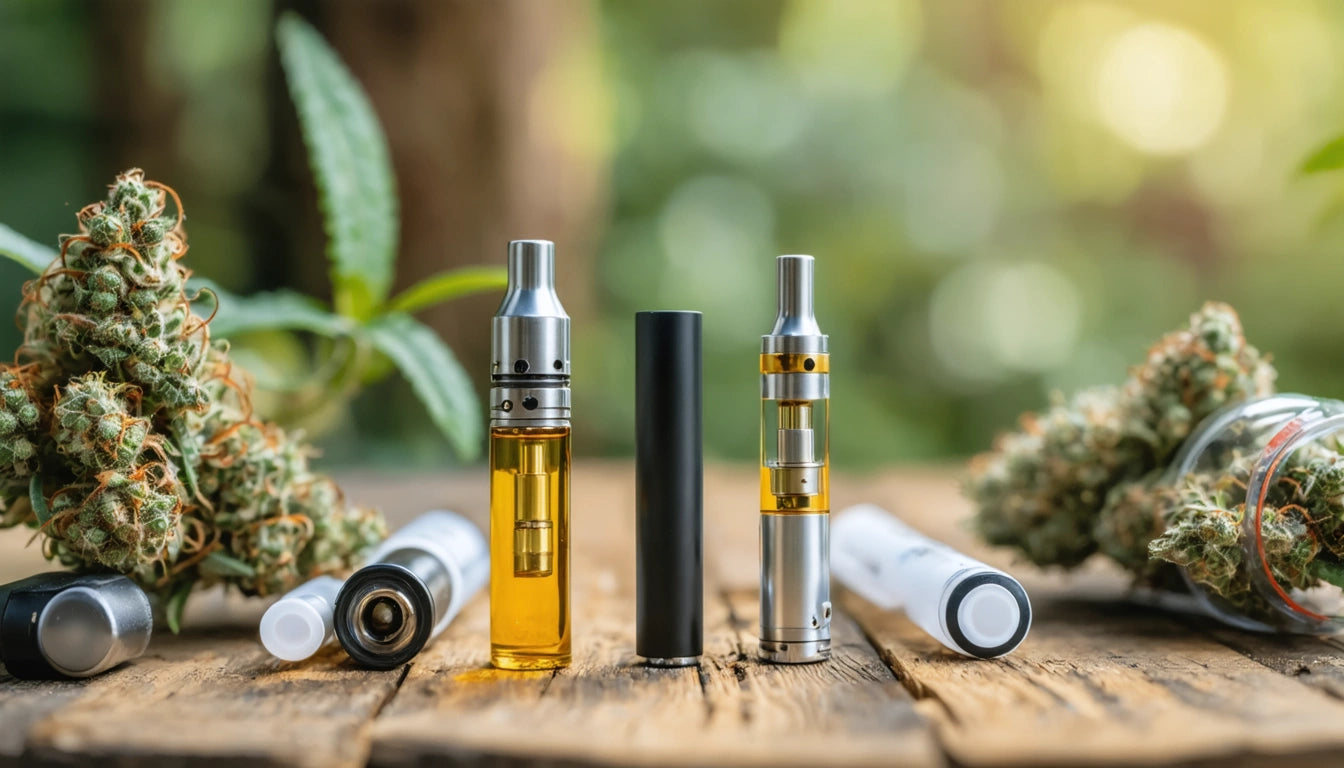Table of Contents
Exploring the Best of Canna: From Rare Plants to Cannabutter and More
The world of canna encompasses everything from ornamental flowering plants to cannabis-infused culinary creations. Whether you're interested in growing rare African canna varieties in your garden or creating the best cannabutter for edibles, understanding the versatility of this genus offers numerous benefits. This comprehensive guide explores various aspects of canna, providing insights for both gardening enthusiasts and culinary experimenters alike.
Understanding Canna Varieties: From Common to Rare
Canna plants, often called canna lilies despite not being true lilies, come in numerous varieties. The ornamental canna is prized for its vibrant flowers and striking foliage, while cannabis varieties are valued for their therapeutic and recreational properties.
Ornamental Canna Varieties
Among ornamental varieties, the African canna stands out for its dramatic foliage and tropical appearance. These plants typically feature broad, paddle-shaped leaves in colors ranging from deep green to burgundy and bronze. What makes rare canna varieties particularly sought after is their unique coloration, pattern variations, and flower formations.
Some collectors display a cando spirit in their pursuit of rare specimens, traveling to specialized nurseries and participating in plant exchanges to expand their collections. Popular ornamental varieties include:
- Canna 'Pretoria' (striped yellow and green foliage)
- Canna 'Cleopatra' (mottled purple and green leaves)
- Canna 'Phasion' (also known as Tropicanna, with multicolored striped foliage)
Cannabis Varieties
When enthusiasts discuss the best canibus or best canna in cannabis contexts, they're typically referring to high-quality cannabis strains. These varieties are cultivated for their cannabinoid profiles, terpene content, and overall effects. Proper cultivation techniques are essential for developing the plant's full potential.
Growing Canna Plants: Essential Tips for Success
Whether growing ornamental or cannabis varieties, certain principles apply across the board. Understanding these fundamentals helps cultivators achieve the best results.
Climate and Conditions
Canna plants generally thrive in warm, humid conditions with plenty of sunlight. For ornamental varieties:
- Plant in full sun for best flowering
- Provide rich, moist soil
- Maintain temperatures above 55 °F (13 °C)
For cannabis varieties, environmental control becomes even more critical, with specific light cycles needed to trigger proper flowering and cannabinoid development.
Maintenance and Care
Regular maintenance ensures healthy growth for all canna varieties. This includes:
- Consistent watering (keeping soil moist but not waterlogged)
- Regular fertilization during growing season
- Deadheading spent flowers to encourage continued blooming
- Dividing rhizomes every 3-5 years for ornamental varieties
Best Cannabutter Techniques: Creating Potent Infusions
For those interested in cannabis culinary applications, creating the best cannabutter is often a primary goal. Cannabutter serves as the foundation for countless edible recipes, making the infusion process crucial to success.
Decarboxylation: The Essential First Step
Before creating cannabutter, cannabis must undergo decarboxylation, a process that activates the cannabinoids by applying heat. This comprehensive guide details the process, which typically involves baking ground cannabis at approximately 240 °F (115 °C) for 30-40 minutes.
Infusion Methods
Several methods exist for creating cannabutter, each with advantages:
- Stovetop Method: Simmering decarboxylated cannabis in butter and water for 2-3 hours
- Slow Cooker Method: Low-temperature infusion over 4-8 hours for hands-off preparation
- Mason Jar Method: Creating cannabutter in a water bath for reduced aroma
Regardless of method, straining the finished product through cheesecloth or a fine mesh strainer ensures a smooth, plant-matter-free result.
Cannabutter Recipes Worth Trying
Once you've mastered creating cannabutter, numerous culinary applications await. Popular cannabutter recipes include:
- Classic cannabis cookies
- Infused brownies
- Savory dishes like pasta with cannabutter sauce
- Cannabis-infused honey (combining cannabutter with honey)
When cooking with cannabutter, maintaining appropriate temperatures is crucial. Excessive heat can degrade cannabinoids, reducing potency. Most recipes recommend cooking at temperatures below 340 °F (170 °C).
Safety and Storage: Best Practices for Canna Products
Proper storage extends the shelf life of both cannabutter and other canna products while maintaining safety standards.
Cannabutter Storage
For optimal freshness, store cannabutter in an airtight container in the refrigerator, where it typically remains viable for up to two weeks. For longer storage, freezing cannabutter in portioned amounts extends shelf life to approximately six months. Always check for signs of spoilage before use, as butter can develop rancidity over time.
Safety Considerations
Safety remains paramount when creating and storing cannabis products. According to safety guidelines for potentially harmful substances, all cannabis products should be stored in child-resistant packaging to prevent accidental consumption. This is particularly important for edibles, which may be mistaken for regular food items.
Additionally, proper labeling with potency information, ingredients, and a clear











Leave a comment
All comments are moderated before being published.
This site is protected by hCaptcha and the hCaptcha Privacy Policy and Terms of Service apply.